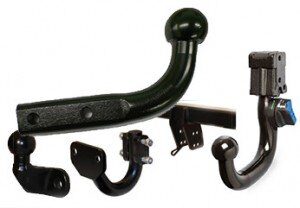 It sounds simple, doesn’t it? Just weld a metal bar to your vehicle, attach a trailer or caravan to it and away you go hauling loads of stuff or off on that road trip.
It sounds simple, doesn’t it? Just weld a metal bar to your vehicle, attach a trailer or caravan to it and away you go hauling loads of stuff or off on that road trip.
However, there a few points you have to consider before fitting a new tow bar including:
1. Any related rules and regulations set down by the Department for Transport
2. The technical requirements for the tow bar you’ve bought/are buying in relation to your vehicle
3. Whether you have the tools and experience to do this yourself, and/or
4. Whether you need to find an experienced fitter to do the job.
DIY Installation
If you’re a handy type of person when it comes to working on motor vehicles you may be wondering whether you can have a go at doing the install yourself. There is no regulation preventing you from doing so. You just need to consider whether you have the skills and tools on hand to complete the process. This includes the ability to follow a set of detailed and specific instructions that accompany the purchased tow bar.
Whether it’s worth your while to do the install yourself, will also need to be balanced against the cost of acquiring any new tools to do the job.
Pre-installation
Before commencing any installation yourself check that you have the necessary tools and parts. This will include the tow bar kit which should have all necessary screws, bolts and instructions. You may also need an electrical wiring kit. These are often separate from the tow bar kit.
Check the tools that you have on hand as you will need a good socket set, torque wrench and spanners; electric drill and bits, and a screwdriver set. You may also find the following useful – a Stanley knife, wire cutters, pliers, and insulation tape.
Depending upon the specific tow bar purchased, a jigsaw or small handsaw may be needed to make cuts in the bumper.
Overview of Tow Bar Installation
In a nutshell, the general tow bar installation process requires that you:
1. Identify the tow bar mounting points (as specified by the manufacturer of your vehicle)
2. Make any necessary changes to the bumper (depending on the vehicle this may mean removal, then reinstalling or cutting the bumper to accommodate the tow bar)
3. Make drilling points on the vehicle and then fit the tow bar by bolting it to the mounting points (lightly at first)
4. Fit an electric kit connecting the brakes, lights and indicators for the trailer or caravan (this may require removing the rear lights and rear interior trim)
5. Restore any parts that had to be removed or modified during the install (bumper or trim), and
6. Tighten the tow bar bolts to the recommended torque.
Fit the Trailer Connection and Inspect
Now that the tow bar is installed, attach the tow ball and hook up the trailer or caravan.
It is essential that you inspect all the parts that have been modified or installed and verify that they have been properly refitted. Check that the trailer or caravan brake and indicator lights are working properly. A short test drive is recommended.
Older Vehicles
Older cars can be trickier to install tow bars on as install kits and electrical kits may not be available for them. In these cases, the old methods of welding the tow bar to the vehicle and also soldering the electric cables will probably be necessary.
Specialist Help
If you are not comfortable with removing or cutting bumpers, fiddling with electrical cables and wiring kits, or you are hesitant in case the vehicle is damaged in any way you can always get an experienced mechanic to fit the tow bar for you.
Shirley Mist has been involved in fashion and design for many years. She has also written extensively for many online publications. She currently writes for The Tribune World and is a valued member of our team.